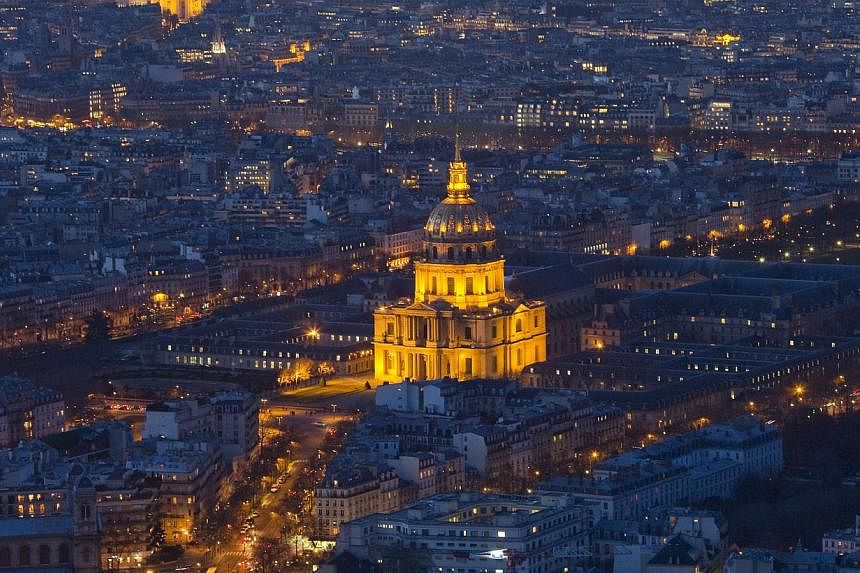PARIS (AFP) - Unidentified drones flew over Paris for a second night in a row, police said Wednesday, in the latest mystery appearance of unmanned aircraft over the French capital at a time of high security.
The sightings follow a series of drone spottings at French atomic plants last year and, more recently over the presidential palace and a bay in Brittany that houses nuclear submarines.
Authorities have been left scratching their heads as they remain unable to catch any of the operators or determine whether the flyovers are the work of pranksters, tourists or something more malicious.
Flying drones over the French capital is banned by law, and the latest sightings come at a time of heightened vigilance following last month's militant attacks.
A police source told AFP that witnesses and security forces reported at least five sightings overnight Tuesday to Wednesday over central Paris - that may have been the same drone or several.
The tiny aircraft were spotted near the US embassy, not far from the Invalides military museum, the Eiffel Tower and several major thoroughfares leading in and out of the French capital, the source added.
Police had already been trying to find out who was behind the appearance of an estimated five separate drone flights over similar areas of Paris the previous night.
PROBE UNDER WAY
"People should not be worried but vigilant, it's an issue which is taken very seriously," government spokesman Stephane Le Foll told reporters, adding a probe was under way to find the operators.
He said drone flyovers had taken place in other countries such as Germany, where a small unmanned aircraft operated by activists denouncing police surveillance landed just several metres away from Chancellor Angela Merkel during a 2013 campaign event.
And last month, a small drone crash-landed on the grounds of the White House, prompting a security lockdown.
French authorities were first alerted to mystery drone flyovers in October, when state-run power company EDF filed a complaint with police after detecting the small aerial vehicles zipping over seven atomic plants.
The sightings continued into November, and altogether some 20 flyovers took place over nuclear plants. Their operators were never found.
In October, a 24-year-old Israeli tourist spent a night in jail and was slapped with a 400-euro (S$600) fine for flying a drone above the Notre Dame cathedral.
Then on Jan 20, a pilotless aircraft briefly went over the presidential palace in Paris, not long after militant attacks that left 17 people dead and put the country on high alert.
And at the end of January, small drones were also spotted near a bay in Brittany that houses four nuclear submarines - one of the most protected sites in the country.
'EYE ON THE SKY'
With many more police and troops out on the streets of Paris following the shootings, drone sightings may be more likely.
"Many sensitive sites are protected and from now on we are asking law enforcement to have an eye on the sky as well," said a police source.
French law prohibits small civilian drones from sensitive areas such as nuclear facilities, which are protected by a no-fly zone that spans a 2.5km radius and a height of 1,000m.
Faced with the difficulty of intercepting drones and their operators, France has launched a one-million-euro programme aimed at developing ways of detecting them.
The pilotless aircraft come in all shapes and sizes, and have a variety of uses, from military applications to surveillance, filmmaking, sports, disaster relief and scientific research.
The most basic unmanned aircraft are radio-controlled by someone nearby, but other more sophisticated models can be pre-programmed and the operator can be miles away.

